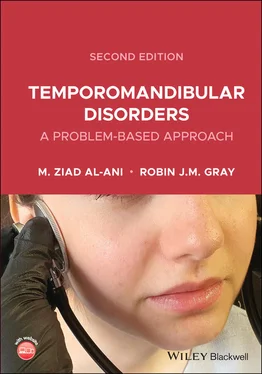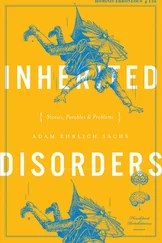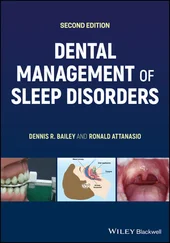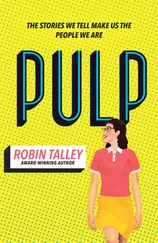1 Cover
2 Table of Contents
3 Dedication
4 Title Page
5 Copyright
6 Preface to the Second Edition
7 Acknowledgements
8 About the Companion Website
9 1: About the BookAbout temporomandibular disorders: what is a ‘TMD’? About the book Chapter 2: Clinical aspects of anatomy, function, pathology, and classification Chapter 3: Articulatory system examination Chapter 4: I've got ‘TMJ’ Chapter 5: I've got a clicking joint Chapter 6: I've got a locking joint Chapter 7: I've got a grating joint Chapter 8: You've changed my bite Chapter 9: I've got pain in my face Chapter 10: I've got a dislocated jaw Chapter 11: My teeth are worn Chapter 12: I've got a headache Chapter 13: I've got whiplash Chapter 14: What's of use to me in practice? Chapter 15: You and the lawyer Chapter 16: The referral letter Chapter 17: How to make a splint Chapter 18: Bruxism: Current knowledge of aetiology and management Chapter 19: Splint therapy for the management of TMD patients: An evidence‐based approach Chapter 20: Patient information Appendix I: Flowcharts Appendix II: Glossary of terms Appendix III: Short answer questions
10 2 Clinical Aspects of Anatomy, Function, Pathology, and ClassificationThe joint anatomy, histology, structure, capsule, synovial membrane, and fluid, ligaments Histology The joint capsule Synovial membrane Ligaments The temporomandibular ligament The stylomandibular ligament The sphenomandibular ligament The intra‐articular disc (meniscus) The bones of the temporomandibular jointThe mandibular condyle The temporal bone Innervation of the TMJ Vascular supply to the TMJ Mandibular (jaw/masticatory) muscles Masseter muscle Function Parafunction Examination The temporalis muscle Function Parafunction Examination The lateral pterygoid muscle Function Parafunction Examination Medial pterygoid muscle Function Parafunction Examination Cervical muscles Function Parafunction Examination Sternocleidomastoid muscle Classification and Pathology Rare conditions Condylar hyperplasia Neoplasms Uncommon conditions Common conditions Disc displacement Myofascial pain Diagnoses of TMDs GROUP I: Muscle disorders GROUP II: DDs GROUP III: Other common joint disorders Further Reading
11 3 Articulatory System Examination 1 Examination of the temporomandibular jointsRange of movement Pathway of jaw opening Maxillary and mandibular midlines TMJ tenderness Lateral palpation Intra‐auricular palpation Examination by manipulation of the mandible Mandibular (masticatory) muscle tendernessMasseter muscle Temporalis muscle Lateral pterygoid muscle Joint sounds Clicking Crepitus Signs of bruxism Occlusal examination Centric occlusion and centric jaw relation Anterior guidance Posterior interferences Freedom in centric occlusion Record‐keeping Further Reading
12 4 I've Got ‘TMJ’!History Medical history Examination Range of movement Joint sounds Signs of bruxism Temporomandibular joint tenderness Mandibular muscle tenderness Occlusion Intraoral examination Special tests Differential diagnosis Final diagnosis for Mrs Davies ManagementExplanation and reassurance Physiotherapy Soft laser Acupuncture Drug therapy Splint therapy Further Reading Evidence‐based Dentistry
13 5 I've Got a Clicking JointHistory Examination Radiographs Other special tests Why do TMJs click? When do TMJs click? Why does the mouth deviate when opening? What preliminary investigations may you use? Radiographs MRI, arthography What is the most likely diagnosis for Mrs Smith? Is disc displacement painful? How should disc displacement with reduction be managed? Does it always need treatment? TreatmentExplanation and reassurance Physiotherapy Drug therapy Anterior repositioning splint The patient journeyHistory and examination Special tests Diagnosis Treatment Advice and reassurance Splint treatment Result Further Reading Evidence‐based Dentistry
14 6 I've Got a Locking JointHistory Examination 1 Radiographs/Imaging Diagnosis Treatment TMJ locking How important is measuring the range of movement? Conclusion Further Reading Evidence‐based Dentistry
15 7 I've Got a Grating Joint Examination Radiographic examination Diagnosis Treatment Explanation and reassurance Physiotherapy Medication Reduction of contributory predisposing factors Final treatment plan What is crepitation? Is osteoarthrosis always associated with pain and crepitus? Radiographic changes Treatment of pathological sequelae Invasive treatment Arthrocentesis Intra‐articular injection of a steroid Hyaluronate Further Reading Evidence‐based Dentistry
16 8 You've Changed My BiteHistory Examination Special tests Treatment Discussion How can this conformative approach be adopted practically? Conclusion Further Reading Evidence‐based Dentistry
17 9 I've Got Pain in My FaceHistory Examination Radiographic examination Differential diagnosis Neuralgic pain Treatment Questions to ask patients regarding pain in generalSite Character Severity Duration and frequency Onset and time Further Reading
18 10 I've Got a Dislocated Jaw Examination Radiographs Other special tests Likely diagnoses Management Further Reading Evidence‐based Dentistry
19 11 My Teeth Are WornHistory Examination Radiographic examination (Bitewings) Diagnosis Treatment Important considerations in tooth surface lossAbrasion Attrition Parafunction Management of attrition Clinical photographs Dated reference casts (study models) Silicone index Determine the cause Prevent and treat the sensitivity Treatment options Categories of tooth surface loss Category 1 Category 2 Category 3 Further reading
20 12 I've Got a Headache Examination Radiographs Articulatory system exam Which muscles are tender? Why do joints click? Likely diagnosis Headache Management Patient journey Further Reading
21 13 I've Got Whiplash Examination Radiographic examination Record‐keeping Are TMD and whiplash related? Trauma Physiological Psychological Cultural Likely diagnosis Management Drug therapy Physiotherapy Further Reading Evidence‐based Dentistry
22 14 What's of Use to Me in Practice? Counselling and reassurance Drug therapy Physiotherapy Splint therapy Mouth prop Occlusal adjustments Does orthodontic treatment cause TMD? Restorative treatment, the dentist, and TMD The use of a facebow and semi‐adjustable articulators Radiographs Further referral Further Reading Evidence‐based Dentistry
23 15 You and the Lawyer Case scenario 1: note and record‐keeping Case scenario 2: a medical report request Do you get enough information? Have you got the necessary experience? What will you receive? You will receive a quantity of notes Doctor's records Dentist's records Walk‐in centre records Royal Infirmary records Dental hospital records Your report Case scenario 3: a disgruntled patient Particulars of claim Particulars of negligence Particulars of injury Further Reading
24 16 The Referral Letter Details History Medical and social history Request Further Reading
25 17 How to Make a SplintHow do you make a stabilisation splint? Facebow registration Armamentarium (Figure 17.2) Reference plane locator Locating and marking a reference point on the patient's face Taking the facebow registration (assembling the earbow on the patient) Centric relation record Fitting a stabilisation splint How do you make an anterior repositioning splint? Bite registration Fitting the ARPS Further reading
26 18 Bruxism: Current Knowledge of Aetiology and ManagementAetiology of bruxism Definition of bruxism Bruxism and TMD Why bruxism (parafunction) is potentially damaging? How much evidence about the efficacy of botulinum toxins on bruxism? How can bruxism be managed? Further reading Evidence‐based dentistry
Читать дальше












![John Bruce - The Lettsomian Lectures on Diseases and Disorders of the Heart and Arteries in Middle and Advanced Life [1900-1901]](/books/749387/john-bruce-the-lettsomian-lectures-on-diseases-and-disorders-of-the-heart-and-arteries-in-middle-and-advanced-life-1900-1901-thumb.webp)